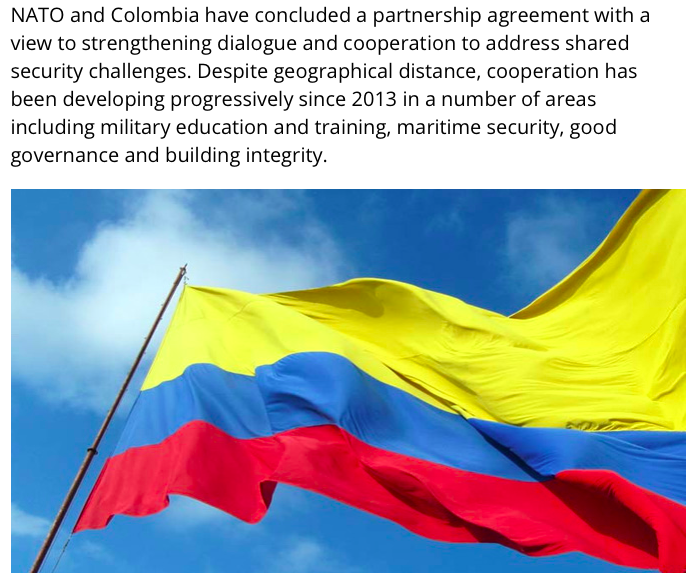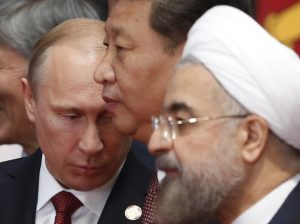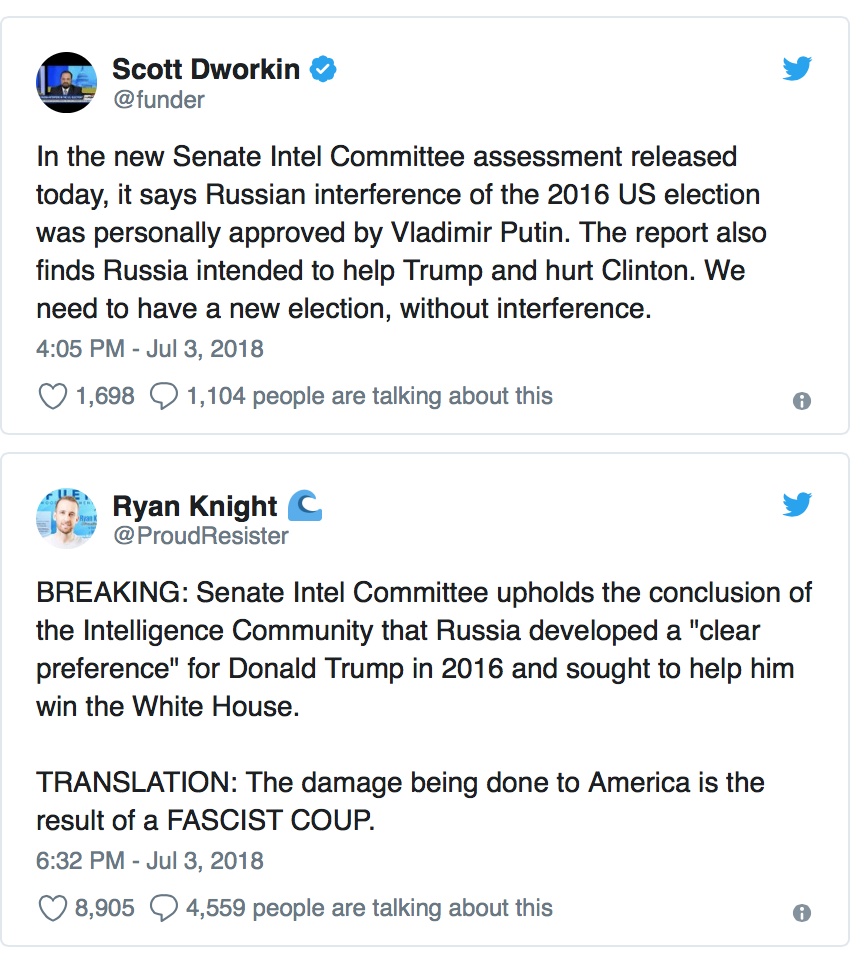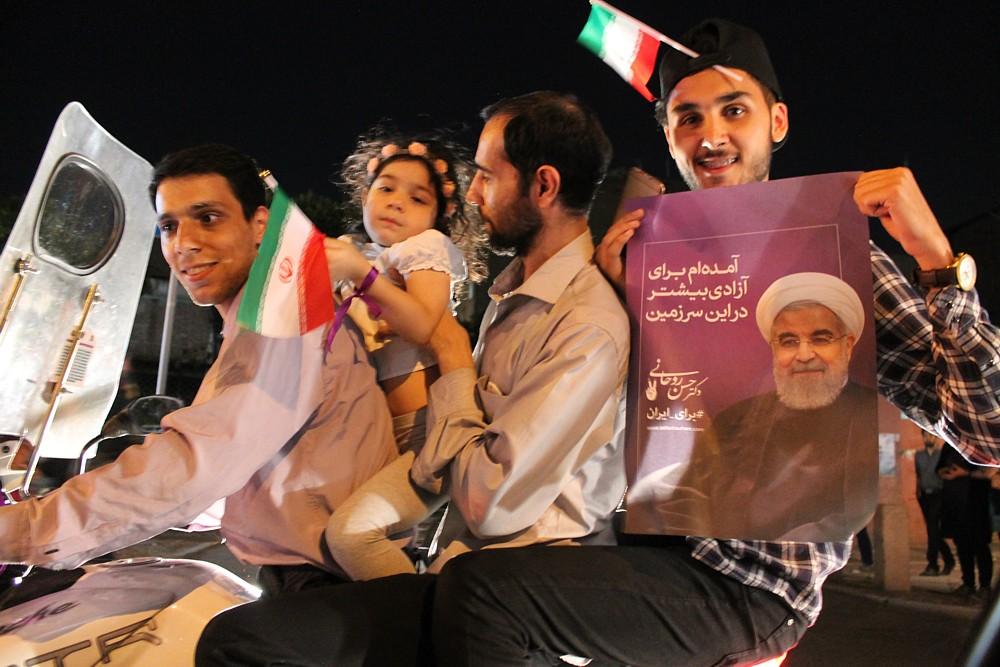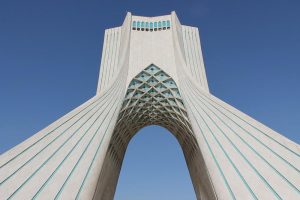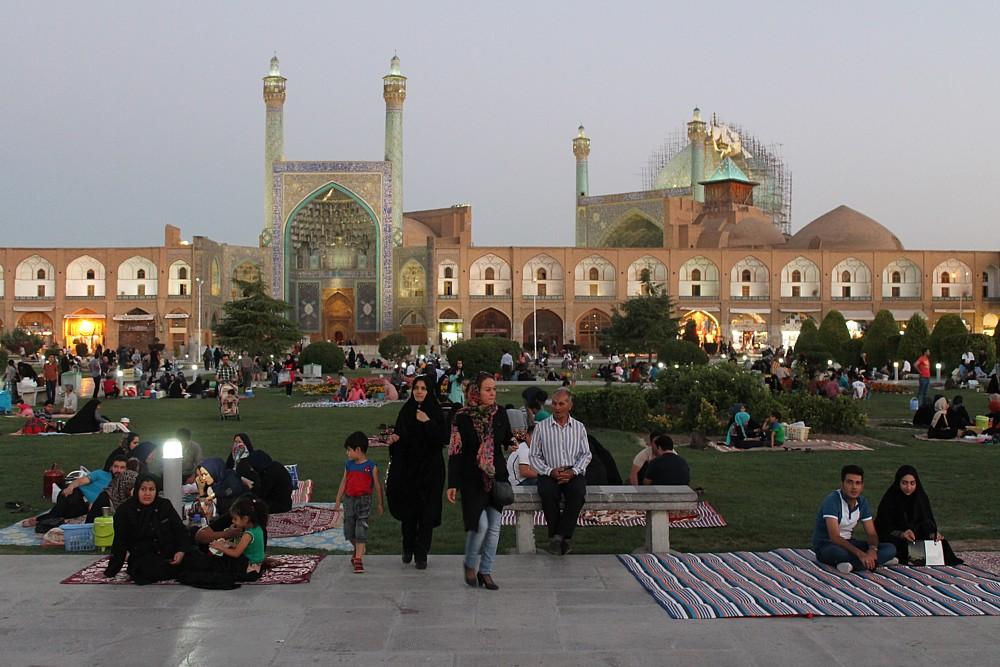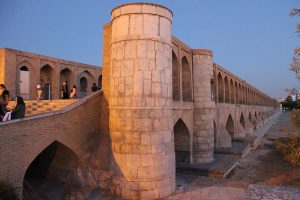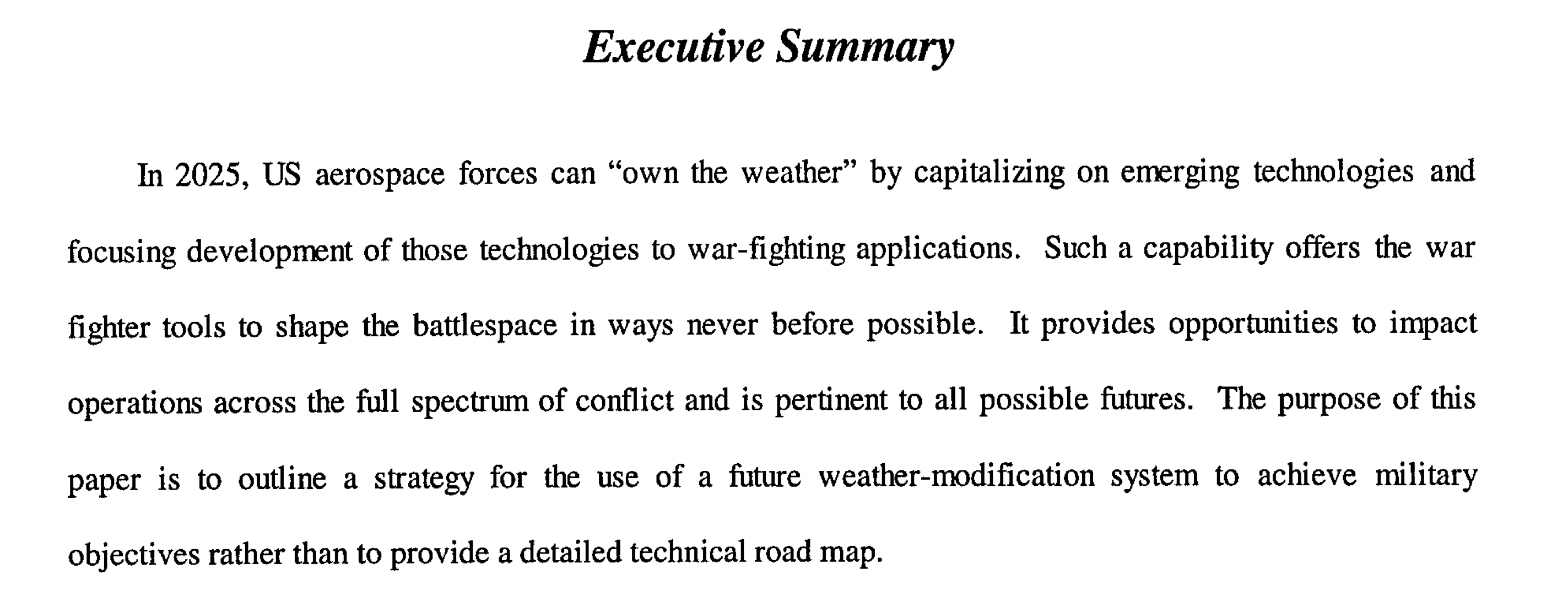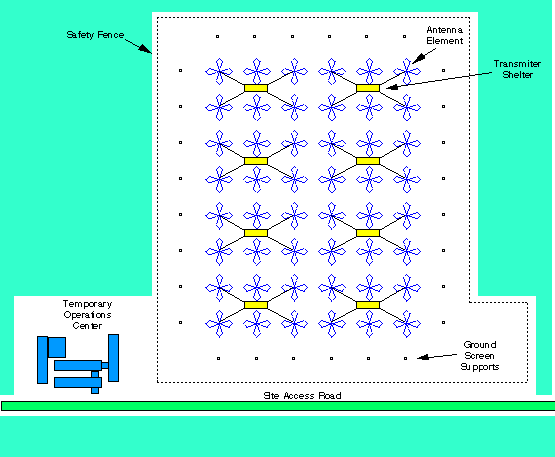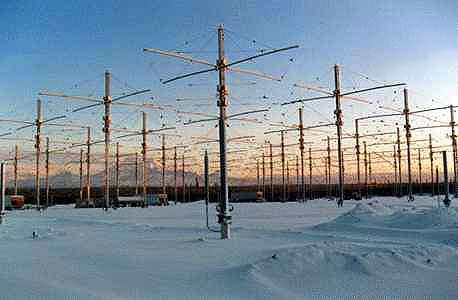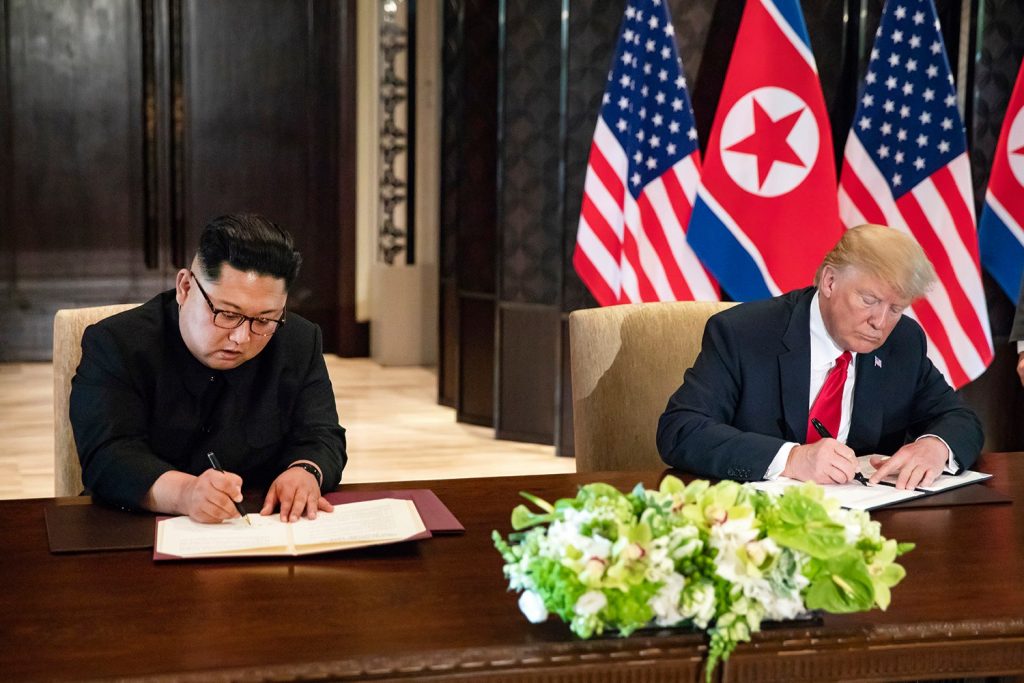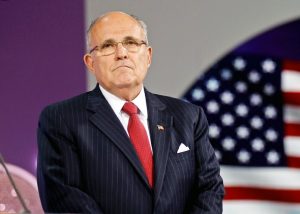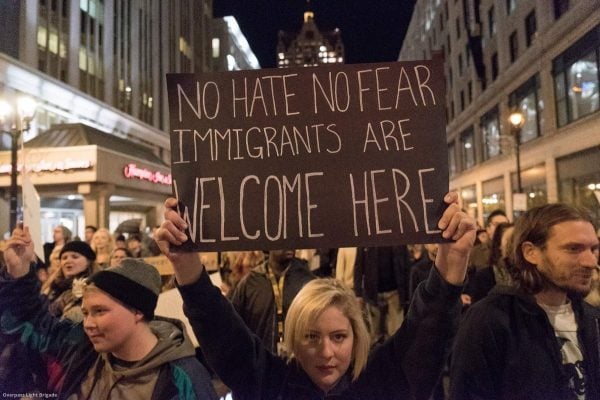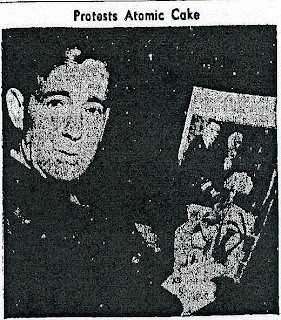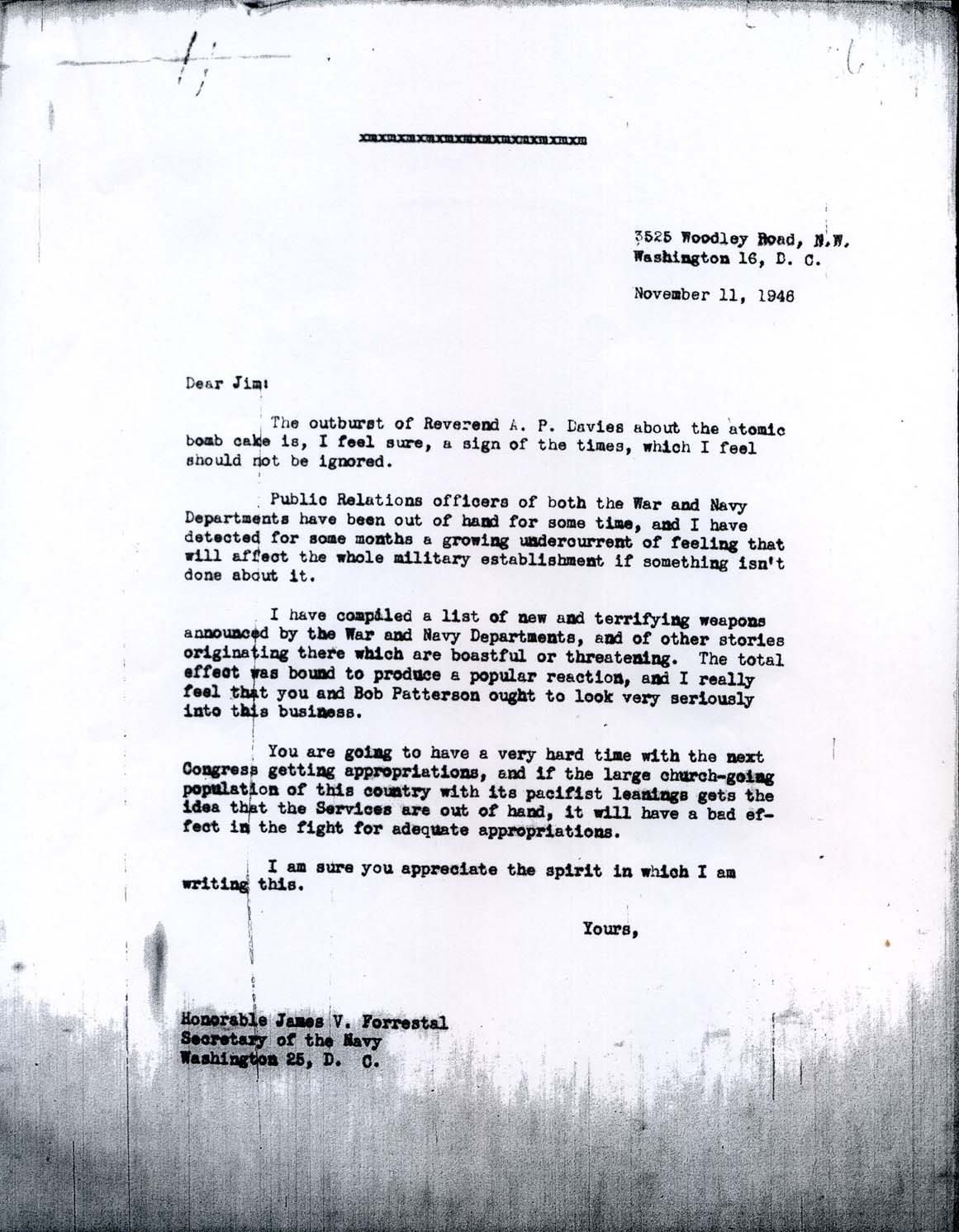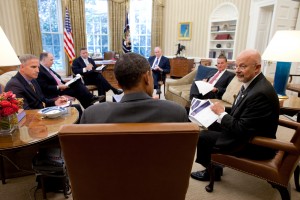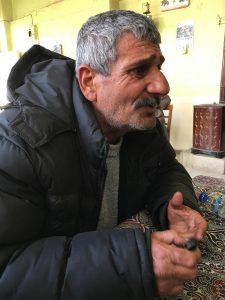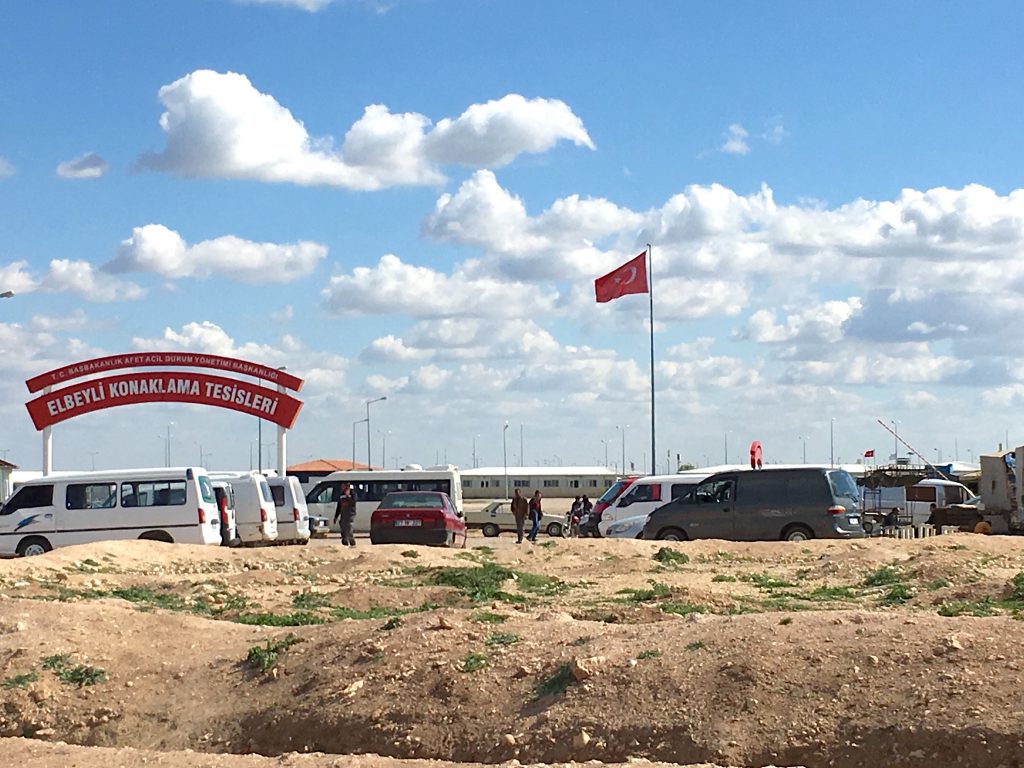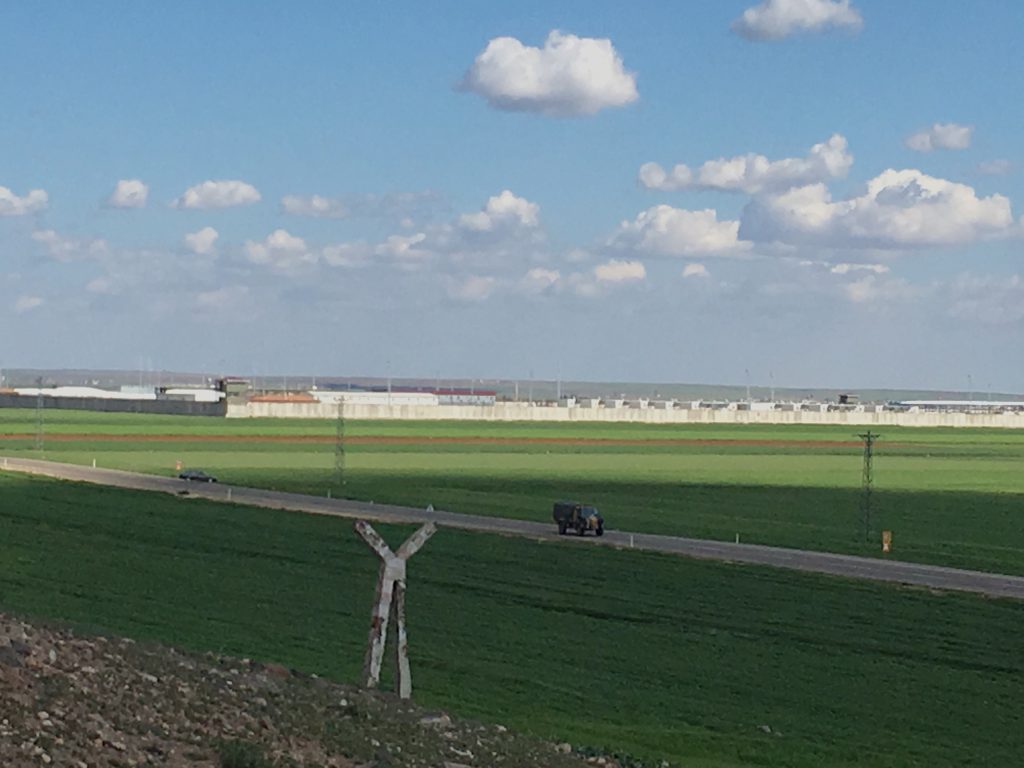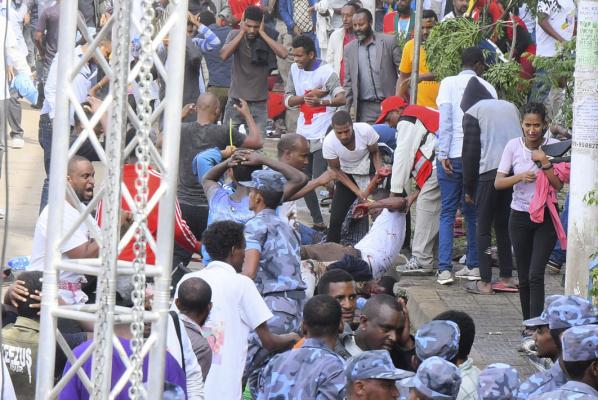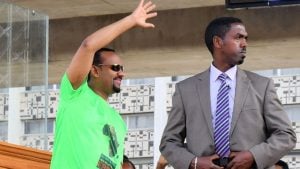1. History of the movement, structure, and ideology
History
The movement of Ansar Allah (Supporters of Allah), also known as the Houthis, is a paramilitary group of Zaidi Shi’ites, acting in Yemen. This is one of the moderate streams of Shia Islam, which has more than 10 million followers around the world and accounts for a third of Yemen’s population. In dogmatic matters, Zaidis took a position which is close to Sunni Islam, relying primarily on the Koran and the Sunnah. In contrast to other Shi’ites, Zaidis do not recognize the doctrine of the Hidden Imam, “prudent concealment” of their faith (taqiya), and they reject anthropomorphism and unconditional predestination.
In 2004, the Houthis formed an uprising. They sought to end government tyranny and corruption, to oppose majority rule of the Sunnis, to resist to ideas of Wahhabism, acquired from neighbouring Saudi Arabia and to make their own leader, Imam Badr al-Din al-Houthi, a head of state. Nonetheless, he was killed on September 10 of the same year.
The organization of Zaidi Shi’ites of Yemen, from which the Houthis movement was subsequently formed, initially focused on cultural and educational work. The first such organization appeared in the early 1990s and was called the “Forum for Youth of Faith”. This organization planned summer camps and various school clubs to promote the ideas of Zaidi Islam in Sa’adah province.
One of the main reasons behind the establishment of the movement by Badr al-Din al-Houthi is the marginalization and persecution of the Hashemites and Zaidis by the Yemeni government. They were expelled from all important positions in the country after the establishment of the Republic of Yemen. In addition, Badr al-Din al-Houthi established the movement out of fear of the disappearance of the Zaidi doctrine, especially after many Zaidis converted to the Sunni faith because of persecutions by the Yemeni governments. It is important to note that for many years the provinces, where the majority of population are Zaidis, were poorly developed economically.
Structure
Following the killing of movement’s founder, Hussein Badr al-Din al-Houthi in 2004, the Houthis were led by Hussein’s father, spiritual leader Badr al-Din al-Houthi. The movement’s current leader is Hussein’s younger brother, Sayyid Abdul-Malik Badr al-Din al-Houthi. Until April 19, 2018, the Chairman of the Supreme Political Council of Yemen was Saleh al-Samad. He was one of the youngest heads of state and government in the modern world. He was killed during a bombing by the coalition’s warplanes. His successor in this post is Mahdi al-Mashat.
Political leadership

Members of the Houthi family have a significant prescience in the political leadership of the movement. However, the leadership is not fully concentrated in their hands.
On November 28, 2016, when the Houthis formed the National Salvation Government, the members of the movement occupied only 10 out of 36 ministries: (Deputy Prime Minister for Economic Affairs, Minister of Justice, Defence Minister, Minister of Civil Service and Insurance, Transport Minister, Education Minister, Information Minister, Minister of Legal Affairs, Minister of Electricity and Energy, Tourism Minister). On 2 October 2016, Abdel-Aziz bin Habtour was appointed as Prime Minister of the newly formed government.
Initially, after the flight of Abdrabbuh Mansur Hadi, the Supreme Revolutionary Committee (SRC) was the main governing body in the country. The SRC began to act as an interim government on February 6, 2015, when the Houthis established control over Sana’a.
On August 15, 2016, the SRC formally handed power to the Supreme Political Council (SPC). The SPC is an executive body formed by Ansar Allah and the General People’s Congress (GPC) to rule Yemen. Formed on 28 July 2016, the presidential council consists of 10 members and until his death in a drone air strike on 19 April 2018, it was headed by Saleh Ali al-Sammad as president with Qassem Labozah as vice-president. The SPC carries out the functions of head of state in Yemen and manages state affairs in a bid to fill in political vacuum during the war. The SPC is not internationally recognized. The SPC was responsible for the creation of the National Salvation Government. At the same time, the SRC authorities have not been abolished and in fact continue to exercise control over important areas of political and social life on the ground.
The Houthis have a full-fledged military structure that includes both newly formed paramilitary formations and a large part of the armed forces of Yemen. The Houthis created their own full-fledged armed forces with general staff, air and coastal defenses, missile forces, intelligence and special operations forces.
Military command
According to available data, the Houthi forces are divided into 7 military districts, each with its own commander.

Military districts and commanders

A special role in the structure of the Houthi forces is occupied by Yemeni Missile Forces (5th and 6th missile brigade), who are responsible for conducting missile strikes against targets in Yemen and Saudi Arabia and for converting a stock of around 200 V-755 SAMs from the S-75/SA-2 system into ballistic missiles. Service, assembly and conversion of missiles are carried out by forces of its own research division — the Missile Research & Development Center. Various Soviet surface-to-air missiles turned into ballistic missiles are known as Qaher-1, Qaher-2 and Qaher-2M.
In April 2018, a Saudi air strike killed Nasser al-Qubari, who, according to pro-Saudi sources, headed the Republican Guard (Militia) team responsible for major missile operations against targets in Yemen and Saudi Arabia.
According to various sources, the Houthis currently have about 150,000 fighters across the country.
Ideology
Goals of the movement include combating weak economy and political marginalization in Yemen, and fighting for the autonomy of regions in which majority of the population is Zaidi. From the statements of high-ranking officials of the movement, one can draw a conclusion about what Ansar Allah wants to achieve. Their aims include seeking government accountability, fighting corruption, ensuring people have access to public services, fighting for fair fuel prices, employment opportunities for ordinary Yemenis and stopping Western intervention in the country’s affairs. They also declared their desire to establish a democratic non-sectarian republic in Yemen.
As for religion, the leaders of the movement claim that their actions are aimed at combating the expansion of Salafism, which comes from neighboring Saudi Arabia and protecting the community against discrimination based on religious grounds. The slogan of the movement is “Allah is the greatest. Death to America, death to Israel, a curse on the Jews, victory to Islam”. This does not mean that the Houthis want to destroy the US or Israel. According to Ali al-Bukhayti, the spokesperson and official media person of the Houthis, this slogan means that the movement is against interference in the affairs of Yemen of the US and Israel, which help Saudi Arabia and its allies.
2. Background of the conflict and the Saudi-led intervention
In January 2011, mass demonstrations began demanding the resignation of then President Ali Abdullah Saleh, who ruled the country for 33 years. Causes: poverty, a significant part of the population constantly suffered from hunger and lack of access to drinking water, youth unemployment, and religious tensions.
In early February 2011, the protests forced the president to make some concessions: he did not transfer power to his son, reduced the number of presidential terms to two in a row and dropped an idea to participate in the upcoming elections. Saleh refused to leave the post at that moment. On February 17, the first protesters died at the hands of the police in Aden. Violence grew until it reached its peak on March 18, when 52 demonstrators were killed in the capital, Sana’a. Confrontation that involved shootings and explosions lasted until May 19, 2011, at which point a ceasefire agreement was reached. President Saleh was prepared to leave his office within 30 days and hold presidential elections in the following 2 months.
However, Saleh refused to sign the document agreed upon by the parties. This decision caused a new round of violence. Yemen’s aviation and armed groups of the opposition entered the scene. 72 more people were killed in the capital. In the last days of May, 50 Yemenis were killed from dispersal of demonstrations in the southwestern city of Taiz. An important turning point was the shelling of the presidential residence in Sana’a on June 3. Prime minister and speaker of parliament, and Abdullah Saleh himself, were wounded. The Houthies tried to break into the city. Saleh fled from Yemen.
In November of the same year, he finally resigned, declaring this from the capital of Saudi Arabia, Riyadh, in the presence of King Abdullah and then Crown Prince Nayef Al Saud. Saleh actually transferred power to Hadi – then vice-president of Yemen, a Sunni, who took a pro-Saudi position. However, this action did not prevent the civil war or change the situation. The troops led by Saleh’s son opened fire on protesters, killing and injuring up to a hundred people. The government took several unpopular measures, in particular, reducing subsidies for oil products, which was expected to lead to higher prices of gasoline. New protests began. The Houthis took up arms and seized districts and state institutions in Sana’a, installing their checkpoints. Despite the peace agreement that was signed with the participation of the United Nations, and the replacement of the prime minister, the military actions continued, spreading to other Yemeni cities. On January 20, 2015, supporters of Ansar Allah occupied the residence of the President of Yemen and forced Hadi to file a resignation on January 22 and flee the country.
Saudi-led intervention
Given the political crisis and the inability of the Hadi government to restore order and carry out the required reforms, the popularity of the Ansar Allah movement increased substantially. The movement was gaining control of more and more territories and infrastructure. This situation was unacceptable to the Saudi regime. The Saudi assembled a military coalition, which included virtually all countries of the Persian Gulf (except Oman). To some extent, Egypt, the United States, Morocco, Sudan, Pakistan, Senegal and Jordan also provided assistance. Fleeing to Saudi Arabia, President Hadi called for military intervention in the country to suppress the insurgency. Aden became the capital for forces loyal to the fled president. The Houthis, in turn, strengthened in the north-west of the country.

An airstrike in Sana’a on 11 May 2015 (Source: Ibrahem Qasim / CC BY-SA 4.0)
The invasion officially began on March 26, 2015 with Operation “Decisive Storm”. The coalition established a no fly zone over Yemen. After initial air strikes, most air defense systems on the territory, belonging to the Houthis, were destroyed or put out of order. Full-scale fights began on both sides. On April 21, the operation was officially ended on the formal request of President Hadi himself. On April 22, 2015, a second operation was launched – Operation “Restoring Hope”, which continues to this day. Its goal is to restore the power of President Hadi over the whle country and put an end to the Houthi movement.
Currently, the Ansar Allah movement consists of tribes from northern Yemen, some supporters of the former president Saleh, including units of the Republican Guard and the Yemen Army. Iran is an external ally, providing military advisers and technical specialists, including those from Lebanese Hezbollah. Saudi Arabia’s interests within Yemen are supported by the Sunnis, supporters of the deposed President Hadi, as well as local Wahhabists. Another side of the conflict is the UAE, which supports the Southern Yemeni Movement, representing the interests of a significant part of the population of the former South Yemen (the People’s Democratic Republic of Yemen).
3. General Course of the War
Main Events
2015 was marked by the most violent clashes. During this period, the coalition lost the F-16 of the Moroccan Air Force in the province of Sa’adah, as well as three AN-64 Apache helicopters, two of which were shot down in the Saudi province of Najran, another lost over the Yemeni province of Marib. The coalition’s offensive on the Aden-Abyan road in summer 2015 was known for heavy losses of armored vehicles. On August 24, the Houthies destroyed two Abrams battle tanks in the Saudi province of Jizan. On August 25, in the province of Baida, a column of armored vehicles of the UAE was destroyed in an ambush. Soldiers from Emirates lost 11 MRAPs, some of which were abandoned by the crews. On August 29, two more Abrams were destroyed in the same province. By the end of August, the planned blitzkrieg of the coalition turned into a total failure. Hadi supporters and interventionists were trapped in fierce battles in the provinces of Taiz, Marib and Baida. It is estimated that dozens of armored vehicles were lost. On September 4, more than 100 fighters were killed, including 52 UAE soldiers, 10 Saudi soldiers and 5 citizens of Bahrain, when the “Tochka-U” missile hit a military camp of the coalition in Marib.
In mid-September, over 20 Saudi armored vehicles were destroyed in Marib in three days. Large losses forced commanders of the coalition to replace their soldiers with militants from among the supporters of Hadi. In the same month, the UAE Air Force began providing air support to Hadi supporters, from the Eritrea territory, which significantly reduced the fly-time for air strikes. Seeking to reduce the cost of the air campaign, the leadership of the UAE preferred to use light AT-802U attack aircraft for air strikes; this is much cheaper than to employ Apache attack helicopters and F-16 fighters. In October, a Sudanese military arrived in Yemen, and there were reports of mercenaries from Colombia operating in the region.
In 2016, the war acquired characteristics of prolonged trench warfare. Hadi forces were in a half-kilometer of the Taiz area, but the Houthis did not have enough strength to cut the enemy’s communications. Frictions began within the coalition regarding the continuation of the operation and on June 16 the UAE reduced its direct military involvement in the conflict. However, the coalition’s aviation continued air strikes against military and civilian targets in Yemen. For their part, the Houthis and their allies continued raids on the border provinces of Saudi Arabia and missile attacks on military installations in Saudi Arabia. This situation was used by terrorist organizations such as ISIS and Al-Qaeda in the Arabian Peninsula (AQAP). These organizations acquired control of large areas in the south and east of the country.
In 2017, the war in Yemen also bore characteristics of trench warfare. In May, the Sudanese military attempted to carry out independent offensive operation in the desert of Midi, which ended in the complete defeat of the Sudanese force. In the fall of 2017, the Houthis and a loyal part of Yemen’s army undertook an offensive operation in the province of Taiz, which led to bitter trench battles in which neither side was able to achieve decisive success. The Houthis remained in control the western provinces of the country, including the capital. Iran provides extensive assistance to anti-Saudi forces. Supporters of Hadi and the interventionists have control over the southern and eastern provinces. Militants of AQAP and IS act in the north, an example of which is the attack by ISIS on Aden in November 2017.
By the end of November 2017, the air force of the coalition had lost 8 aircraft, mostly for technical reasons, and at least 14 helicopters. The total number of casualties of the coalition is unknown. However, by the end of September, 2017 at least 412 Sudanese had been killed in Yemen. Saudi Arabia lost at least 42 tanks during the conflict, the total losses of armored vehicles exceed 300. The UAE lost at least 150 armored vehicles. The official losses of the coalition forces at the beginning of 2018 are almost 1,300 service members, the total number of casualties of the coalition and its proxies throughout the conflict is certainly estimated in the thousands. A war that was meant to be a quick victory turned into a big problem for Riyadh. Despite huge funding, the Saudi army was unable to take control of Yemen’s territory and to protect its territory from raids and missile attacks of the Houthis.
In 2018, key military developments were taking place in the city of Aden, north and east of the city of Sana’a and in the western coast, north of the port city of Hudaydah. Additionally, clashes also continued in the Saudi-Yemeni border area and other areas across the country.
For example:
From January 28 to January 31, the UAE-backed Southern Movement clashed with Saudi-backed forces loyal to Hadi over the control of Aden. The violence was halt after the mediation by the UAE and Saudi Arabia. The city formally remained in the hands of the coalition, but an influence of the Saudi-backed faction decreased in the area.
On January 31, the coalition-led forces captured the city of Aden. This advance was presented as a huge victory of the coalition.
On February 18, the Houthis ambushed a large UAE Army convoy in the district of Mawza in the Taiz province. Twelve Emirati soldiers and several fighters, loyal to Hadi were reportedly killed, four armoured personnel carriers (APCs) of the UAE Army and four other vehicles of pro-Hadi forces were destroyed.
On March 14, the coalition-backed forces captured Rab’ayen and al-Admagh mountains in the Nihm district of the Saana province allegedly killing 26 Houthi fighters and destroying 3 vehicles and 2 armored vehicles. Over 70 Houthi fighters were reportedly injured and killed in multiple artillery strikes across the district. The goal of the advance was to set a foothold for capturing the Saana international airport and thus preparing for another attempt to capture the Yemeni capital.
On March 24, the Houthis launched an offensive in the Nihm district killing more than 120 fighters backed by the coalition. Dozens of their vehicles were reportedly destroyed. the international Saana airport, north of the Yemeni capital of Saana. The Houthis reversed the coalition’s gains in a single rapid attack. On March 27, the Houthis forced Saudi-backed forces to withdraw from some of their positions in the Yam mountain range area.The Saudi-backed attempt to advance on Sana’a failed.
On April 7, the Houthis ambushed a battalion of the 9th Airborne Division of the Armed Forces of Sudan, fighting on the side of the Saudi-led coalition in the Midi district in the northwestern province of Hajjah. Between 50 and 80 Sudanese fighters were killed and more than 100 were wounded.
On April 11, the Saudi-led forces captured a center of the Midi district. Thus, they secured a notable part of the border south of the Saudi province of Najran. However, this was not enough to stop the Houthis’ cross-border attacks.
On April 25, the coalition’s forces resumed their military operation in the southwestern province of Taiz capturing some positions in the district of Dimnat Khadir. However, they were not able to develop the initial success.
Since early May, the coalition’s forces have resumed active attempts to reach and capture Hudaydah, which remains one of the key logistical hubs in the Houthi-held area allowing the group to receive humanitarian aid for the local population. Fierce clashes north of the city were taking place from mid May till June when the coalition’s forces were pushed from their positions near the Hudaydah airport. On June 6, the Houthis started attacking supply lines of the coalition’s forces involved in the operation. The situation in the area remains tense.
The nature of land combat in Yemen is different from what was observed in Iraq and Syria. In 2003 in Iraq, American infantry and armoured units used tactics of rapid advancement and clearing, from area to area with minimal downtime. This was not observed in the actions of the Saudi army. On the contrary, there was a glaring incompetence of personnel and an inability of the command to use available forces and means. Several eyewitnesses testified that the leadership of the Saudi army was engaged in sorting out personal quarrels instead of organizing and planning operations. The commanders of the Saudi coalition made a number of significant mistakes in their use of armored vehicles during the offensive operations in the summer and autumn of 2015. Lightly armored BMP and BTR vehicles, intended for the transport of personnel, were used as support vehicles for infantry when the infantry stormed positions of the Houthis, resulting in massive losses of these light armored vehicles.
The apotheosis of unprofessionalism of the coalition was the use of MRAPs, which became one of the symbols of the Yemeni ventures of the kingdom.
The MRAPs which were frequently used in Yemen, possessed good anti-mine protection but were completely deprived of any protection from fire of anti-tank weapons. The Saudis tried to compensate for low training and poor morale of their infantry by using a large number of armored vehicles. The result was a massive loss of these vehicles. The MRAPs were destroyed by fire from ATGMs, RPGs and heavy machine guns. Often, the crews of these vehicles were seen fleeing the battlefield. Equipment designed for patrolling the terrain and transferring personnel in counter-partisan war turned out to be useless. The Houthis usually destroyed the abandoned MRAP vehicles. They did not have sufficient material or technical support required for repair. Similar mistakes were made by the Saudi coalition with use of the heavy armored vehicles. Low training of the personnel allowed the Houthis to knock out American Abrams M1 battle tanks to a safe distance with the help of obsolete Soviet anti-tank systems.
It is almost certain that in the future, the war in Yemen will become increasingly partisan. There are several reasons for this. The Ansar Allah movement is under a blockade and does not have sufficient reserves for a full-scale offensive to the south and east of the country. In turn, the coalition forces incurred unnecessarily high losses and experience problems with motivation and morale of their own armed forces.
The Houthis and supporters of Saleh have an advantage in combat experience and training of their personnel. A significant number of Yemeni officers was previously trained by Soviet specialists. In addition, Iranian advisors also played a significant role in assisting anti-Saudi forces.
Missile war
Until the early 1990s, the Yemen Arab Republic (YAR) and the People’s Democratic Republic of Yemen, commonly referred to as South Yemen, had been actively purchasing Soviet missile systems 9K72 (SCUD) and 9K79 (Scarab), which were widely used during the 1994 civil war. By the mid-2000s, the Yemeni army had four artillery brigades, one of which was equipped with field artillery, and three: the 1st, 26th and 89th artillery brigades, were equipped with the operational-tactical missile systems. All three brigades were part of the Yemeni Republican Guard. Their main task was to protect the capital of Sana’a. In the early 2000s, the Yemeni army withdrew Luna-M short range artillery rocket systems and replaced them with Hwasong-6 tactical ballistic missiles, which were acquired from North Korea. Pyongyang also assisted in the organization of missile services, and the necessary training of personnel. However, under the pressure of the US, since 2003, the parties’ cooperation has been terminated. According to data provided to the US Congress, 24 “Tochka” and 18 “Scud” complexes were in service in Yemen as well as some stockpiles belonging to them in 2004. According to the US analytical center “Jamestown Foundation”, in the 2000s the government of Yemen purchased 45 Hwasong-6 missile systems from the North. In the 2000s, Iran was responsible for supplying Yemen with missile systems and missiles. Its missiles are compatible with Soviet and North Korean launchers such as SCUD (for example, “Shehab-2”). In addition, they are even more powerful and long-ranged than their Soviet and Korean counterparts. However, at present Iran does not have the opportunity to supply their Houthi allies with new missiles. The naval blockade makes it is almost impossible to deliver large-scale weapons to Yemen. Perhaps the production of these missiles or their partial assembly from the previously supplied components is already established in Yemen itself.

The U.S. Navy has actively participated in the Saudi-led naval blockade. (Source: Wikimedia Commons)
From the onset of the operation of the Arab coalition in Yemen, Saudi Arabia and its allies tried to destroy stockpiles of heavy weapons and ballistic missiles. However, this goal was not fully achieved. Units of the Yemeni military, which united with the Houthis, managed to retain the bulk of the mobile missile systems and rocket reserves, which subsequently allowed them to launch regular missile strikes on Saudi Arabia.
For example:
- In October 2016, it was reported that a Yemeni ballistic missile was intercepted in the area of Mecca. At that time, Yemenis were aiming at an airport near the city of Jeddah. A rocket was also launched on the King Fahd Air Base.
- In May 2017, the Houthis commemorated US President Donald Trump’s visit to Riyadh by launching a Burkan-2 missile. It fell in the vicinity of the Saudi capital. Earlier, the Yemenis carried out two more missile strikes in the direction of Riyadh. A strike on the air base of King Salman was also made in May 2017.
- On July 22, 2017 the Houthis published a video of the launch of the Burkan-2 ballistic missile at the Saudi refinery in the city of Yanbu. It was reported that this missile flew about 930 kilometers, which is the longest distance a Houthi missile has travelled. The Houthis said that the missile struck an oil refinery, however, representatives of Saudi Arabia stated that after the fire was extinguished, the enterprise continued to operate normally.
- On November 4, 2017, Saudi air defense forces intercepted a ballistic missile fired from Yemen northeast of Riyadh. In response, the Crown Prince of Saudi – Mohammed bin Salman – said that the alleged missile supplies to the Houthis from Iran was an act of military aggression.
- From the onset of 2018 there has been an increase in the number of missile launches by the Houthi-led forces. The launches were particularly numerous in March-April of this year.
- On March 22, the Yemeni forces that are loyal to the Houthis, announced in an official statement, that they tested a new short-range ballistic missile named Badr-1. According to the statement, a key oil facility of the Saudi Aramco oil company in the southern province of Najran was successfully targeted. The Yemeni forces said, that the Badr-1 is a solid fuel ballistic missile with a speed of up to 4.5 Mach and high accuracy. However, the available images allow to conclude that it is a solid fuel artillery rocket, not a ballistic missile. The Badr-1 is likely a copy of the Iranian Fajr-3 artillery rocket, as both rockets appear to have similar diameter and length. The range of the Fajr-3 is over 43km. This is more than enough to hit Najran province form the Houthis-held areas in northern Yemen.
- To mark the third anniversary of the military operation of the Saudi-led coalition, Houthi forces launched seven rockets of various types, during the night of March 25th to 26th at the airports of Riyadh, Abhi, Jizan and Najran. The Burkan-H2 missile was launched at Riyadh. Qaher-M2 missiles (modified S-75 air defense missiles) were employed against other targets. Saudi air defense forces intercepted the missiles through a massive launch of Patriot anti-aircraft missiles. However, judging by video evidence, at least two anti-aircraft missiles malfunctioned: one exploded almost immediately after its launch, the other lost its course and fell to the ground.
- On April 8, the Yemeni Missiles Forces launched a Badr-1 missile at a radar station outside the city of Khamis Mushait in the province of Asir. On April 9, they launched a Zelzal-2 missile at the Nahouqa military base in the province of Narjan. On April 10, a Badr-1 ballistic missile was launched at a military facility in the province of Najran. On April 11, a Burkan-H2 missile was launched towards the Saudi capital and a Badr-1 was launched into one of the border regions of Saudi Arabia. The Burkan-H2 missile reached its target and fell in one of the inhabited areas of the city. On the same day, the Houthis carried out successful strikes at the Abha airport in the province of Asir and facilities of the Saudi company Aramco in the province of Jizan using Qasif-1 suicide UAVs.
- On April 17, the Yemeni Missiles Forces launched a Badr-1 rocket at a power station in the province of Najran. The rocket was intercepted by the Saudi military, according to Saudi sources.
- On April 23, the Houthis launched two Bader-1 rockets at oil facilities belonging to Aramco in Jizan.
- On April 28, the Houthis launched at least 8 Badr-1 ballistic rockets at “economic and vital targets” in Jizan. However, no details were provided.
The naval blockade along with a deficit of material resources forced the Houthis to develop an asymmetric response to the coalition. Therefore, the Houthis re-designed anti-aircraft missiles from air defense systems to short-range ballistic missiles. This made sense given that the country’s air defense system ceased to function but the stock of missiles from it remained. The best suited missiles were large anti-aircraft missiles. They have powerful cores with high-thrust engines Their engine works only in the dispersed section and then the missile goes along the ballistic curve as an artillery shell. Anti-aircraft missiles from S-75 air defense systems in this regard are an ideal choice.
In December of 2015 the Qaher-1 ballistic missile was shown. It originates from missiles of the S-75 air defense systems. Its launch at the Saudi Khalid Bin Abdul Aziz air base was also announced. It is difficult to judge the specific parameters of this homemade missile but it can deliver a warhead weighing 200-250 kg to a range of 100-250-kilometers.
Actions of the Houthis against air and naval forces of the coalition
Airspace
Prior to the intervention, Yemen had about 80 combat aircraft, of which the most modern were MiG-29s. There were about 20 of them and most were stored at the Al-Dailami airbase (near the Sana’a international airport). A small detachment of these aircraft was also stationed in Al-Anad. During the first weeks of the 2015 campaign, the Yemeni Air Force was eliminated, including shelters in which the MiG-29 fighters were stationed.
The only possible way to counteract aggression was the use of anti-aircraft guns, self-propelled antiaircraft guns and MANPADs. Before the start of the aggression of the coalition, the Yemeni Air Defense had 20 STRELA-1 missile systems, 200 to 360 STRELA-2 missiles, up to 120 self-propelled antiaircraft guns (from 20 to 34 American M163s (6×20 mm), up to 89 Soviet Shilkas (4×23 mm)), up to 500 anti-aircraft guns (52 American M167s (20 mm), from 100 to 200 Soviet ZU-23-2s (23 mm), up to 150 units of 61-K (37 mm), up to 120 units of C-60 (57 mm), up to 40 units of KS-12 (85 mm)). A large part of this arsenal fell into the hands of the supporters of the Ansar Allah movement.
Yemen had up to 4 batteries (up to 40 launchers) of Soviet S-75 air defense systems, 2 batteries (up to 8 launchers) of S-125 air defense systems and an unknown number of Kub air defense systems. Some of them lost their operational capability even before the outbreak of the hostilities. A large chunk of the stationary complexes and positions of radio engineering equipment were put out of order during the initial air strikes. Despite this, Yemeni air defense units, though use of camouflage and tactical methods, continue to inflict losses on the coalition’s air force.
In addition to missiles and air defense systems, the movement uses a reserve of missiles that are intended for launch from fighter jets. On March 21, 2018, an air-to-air missile R-27, launched from a land-based launcher in Sa’ada province, was successfully used against a Saudi coalition warplane. On March 26, the Houthis used R-27T air-to-air missiles from ground-based launchers. It was said that the launches were carried out on two F-16 UAE aircraft, but this time, the missiles failed to hit their targets.
In August 2017, the Arab coalition released a memo, officially recognizing that since May 26, 2015 it lost 10 aircraft: 4 were from the UAE, 3 from Saudi Arabia, one from Bahrain, one from Jordan and one from Morocco. However, the August 2017 memo significantly underestimates the loses of the coalition.
Official chronology of the coalition’s losses from the start of the Saudi-led intervention is as follows:
- May 20, 2015 – a F-16 jet of the Morroco Air Force was shot down, the pilot died;
- August 22, 2015 – an Apache helicopter of the Sauudi Air Force was shot down with MANPADs, both crew members died;
- December 30, 2015 – a F-16 jet of the Bahraini Air Force was lost due to a “technical malfunction” in Jizan;
- March 14, 2016 – the UAE Air Force lost a Mirage-2000-9 jet south of Aden, both pilots died;
- June 12, 2016 – a UAE helicopter was shot down over the sea near the port of Mocha;
- June 13, 2016 – a UAE helicopter was lost near Aden;
- June 25, 2016 – an Apache helicopter of the Sauudi Air Force was shot down (allegedly crashed because of the weather) over the province of Marib, both pilots died.
- February 24, 2017 – a F-16 fighter of the Royal Jordanian Air Force was lost in the province of Najran;
- April 18, 2017 – a Black Hawk helicopter of the Saudi Air Force was shot down in Marib;
- August 11, 2017 – a UAE Air Force helicopter crashed, 4 crew members died.
Fighting at sea
Naval military operations are reduced to a sea blockade and the shelling of the Yemeni coast by the forces of the coalition. The Houthis retaliate with anti-ship missiles against the Navy of the coalition countries.
- On October 7, 2015 the Yemeni Coastal Defense Forces (YCDF) hit a ship of the Saudi coalition with a PKR “P-20” or its analogue of Chinese or Iranian production. Shortly after a burning and sinking ship washed ashore. It turns out that the struck target was the Saudi fuel-tanker Boraida with a displacement of 11,200 tons
- On October 10, the YCDF launched a missile at a Baynunah-class corvette, belonging to the UAE Navy, with a displacement of 630 tons. The missile hit its target and the ship sunk.
- On October 10, the YCDF launched a missile at a La Fayette-class frigate of the Saudi Navy, Al Damman. Its displacement is 4,650 tons. The missile hit its target and the ship was damaged. According to some reports it later sunk.
- On October 10, the YCDF launched a missile at a Baynunah-class corvette, belonging to the UAE Navy, with a displacement of 630 tons. The missile successfully struck its target.
- On November 7, the YCDF launched a missile at what looks like a Saudi guard ship carrying a helicopter. The missile destroyed the target.
- On November 8, the YCDF launched a missile at the coalition forces’ gunboat, which was shelling the coast.
- On November 15, several missiles were launched at a gunboat shelling the coast. It is reported that one missile hit the target and the ship was damaged. The target is identified as a Zulfiquar-class frigate with the number 254, which gives grounds to conclude that it is the Aslat.
- On November 24, a missile was launched at the ship of the Saudi-led coalition. The missile hit its target resulting in a large explosion on the ship.
- On December 5, the YCDF reported that it sunk another battle ship of the Saudi-led coalition. A missile struck a Baynunah-class corvette and sank it.
- On December 16, the YCDF launched a missile at another battleship of the Saudi-led coalition, which was sank or damaged.
In 2015, the Yemenis actively and successfully used anti-ship missiles of PK-20 class or its analogue of Chinese or Iranian production to cause significant damages to the naval forces of the Saudi coalition. 2015 was the year of the greatest intensity of military operations at sea. In addition to 10 sunken and damaged battle ships of the coalition, the Houthi-led forces damaged numerous support vessels, barges, tankers and other ships. In the coming years, the intensity of military operations at sea declined. Due to significant loses, the coalition was forced to limit the use of its naval forces. As for the Houthis, the large number of launches likely depleted their missile arsenal.
Despite this, some military action at sea continued. On October 2, 2016, the Houthis, with a help of a Chinese C-802 missile, destroyed the hybrid catamaran HSV-2 Swift that was leased by the UAE from the US. This vessel was used in the interest of the Arab coalition.
An Arleigh Burke-class destroyer of the US Navy, the USS Mason (board number 87), that possessed a guided missile armament was attacked on October 9, October 12 and October 15 of 2016. In all cases, Chinese-made S-802A anti-ship missiles or their direct counterparts of Iranian production, Nur, did not reach their targets. The low radar power of on-shore guidance systems and the active use of electronic warfare assets by the USS Mason’s crew were likely main reasons behind this scenario. Perhaps the main purpose of these attacks was to probe the destroyer’s protection systems.
On January 30, 2017 the Saudi Navy’s Al Madinah-class frigate was attacked on the western coast of Yemen by the Houthis. A strong explosion ensued. According to official data, two crew members were killed and three were wounded.
On April 3, 2018 a Saudi tanker was attacked with an anti-ship missile in international waters south of the Hodeida province. The vessel received only minor damage and continued its course.
It is difficult to confirm how many targets were sunk. The degree of damages is different, and even ships that receive severe damages can be restored. On the other hand, the coalition’s navy unequivocally suffered irreplaceable losses. Perhaps this was the reason why the Saudi Navy put an order to Spain for 5 new corvettes of the Avante 2200 class. The contract was valued at 3.3 billion.
Humanitarian situation in Yemen
A long civil war, complicated by external intervention, brought Yemen to a humanitarian catastrophe. According to the Yemen Centre for Human Rights and Development, in the spring of 2015, more than 10,000 civilians were killed as a result of air strikes by the coalition. According to UN estimates, three quarters of the population of Yemen – 22.2 million people – need humanitarian assistance.
During the war, Yemen became the largest zone for humanitarian disaster in the world. On the eve of the intervention the country was 90% dependent on the import of medicines and food. At present it is the largest center of cholera on the planet. 700,000 people are infected with cholera, 44% of all new cases in the world and 32% of those dying from cholera in the recent months are recorded among children under 15 years old. In December 2017, about six million doses of the diphtheria vaccine were delivered by a chartered UNICEF airplane to Sana’a. This suggests that in addition to the cholera epidemic, the UN is also afraid of outbreaks of diphtheria.
Nine million people are at the point of starvation. 400,000 children already suffer from acute malnutrition. At least 14.8 million people don’t have access to medical aid. After the introduction of the blockade, wheat flour in Yemen went up by 30%, the price of fuel doubled. In some areas, drinking water costs 600 times more than it did before the blockade. The country has high infant mortality rate from hunger and cholera.
UN experts for human rights came to the conclusion that one of the causes for the severe humanitarian catastrophe in Yemen was the air and sea blockade by the coalition. As a result of this blockade, the work of seaports was in disarray, imports of food, fuel and medicines were disrupted. Unjustified delays in issuing permits for entry of ships into Yemeni ports or refusals for such entries became routine practice from the coalition forces.
4. Propaganda
The Ansar Allah movement has developed its own media strategy to spread their ideas. This strategy largely borrows the ideas of Lebanese Hezbollah. It consists of the release of news stories, videos, dissemination of information through newspapers and forums in social networks. Like the Hezbollah media, the media of Ansar Allah is religious in nature and focuses on combating the US-Saudi invasion. Abdul-Malik al-Houthi, the current leader of the movement, makes speeches that are very similar to those of the Secretary-General of Hezbollah, Hassan Nasrallah.
In 2011, the movement launched its official satellite TV channel, Al-Masirah. The channel has two offices: one in the southern suburb of the Lebanese capital Beirut and another in the Yemeni capital. Two local radio channels stations in Sana’a: al-Masira Radio and Sam FM. There are additional radio stations in other provinces of Yemen. The movement’s biggest focus is print media, given that a significant number of Yemenis do not have access to television due to ongoing fighting and the blockade. Ansar Allah has up to 25 printed and electronic newspapers that spread the ideas of movement. The publications of Al-Masira, Al-Masar, Al-Hawiya and Al-Diyar are important to mention, with Al-Masar mobile and Al-Masira mobile being some of the most important electronic news services. The movement controls part of the state media, including the state news agency SABA and about a dozen of the regional media networks. Some independent or semi-independent groups of activists also support the movement. One of the most popular of these groups is the Yemen Wrath.
The Houthis are very active in producing video reports from direct points of combat. This footage is the basis of content about the conflict on the Internet but is strictly censored on the leading social media sites such as YouTube, Facebook, Twitter, etc., making it difficult to distribute.
Reasons for censorship include regular demonstration of corpses, primarily of the coalition soldiers, excessive naturalism and lack of English broadcasting. Recently there has been an improvement in the quality of produced video content. Earlier videos just showed scenes from the battlefield, now the videos frequently feature voiceovers and animation.
The Ansar Allah propaganda uses established terminology, where the deceased supporters of the movement are represented as martyrs and active fighters are depicted as mujahideens. The movement actively uses graffiti and banners on buildings to spread their messages on the streets. These often include slogans and Suras from the Koran, the Prophet’s utterances, and quotes from the founder of the Houthi movement.
Ansar Allah created a number of bands that perform traditional mountain songs in al-Zamel, which is located in the north of the country. Their music glorifies different tribes, war, courage and faith. These songs coincide in many ways with the tone, rhythm and technique of Hezbollah’s songs, as they use the religious connotations associated with jihad. They are broadcasted on television and radio stations belonging to the Houthies in areas under their control, especially near frontlines. The Houthis also use cars with loudspeakers that drive through densely populated areas and streets of Yemen.
5. Sources of income and financing
Currently, the bulk of external financing comes from Iran and the Yemeni diaspora abroad. At the start of 2010’s around 1.5 to 2 million Yemenis lived outside the country, mainly in the oil-producing countries of the Persian Gulf (about 800 thousand in Saudi Arabia) as well as in Djibouti and Indonesia. Small Yemeni diasporas exist in the UK (the largest is in western Europe – up to 80,000 people), the US and Canada. According to Yemeni government sources, up to 4 billion annually was contributed from foreign workers from Saudi Arabia alone. However, with the beginning of the conflict, the flow of money has dried up. Even before the outbreak of hostilities against the Houthis in 2013, the bulk of workers from Yemen were deported by the Saudi leadership and currently the number of workers from Yemen there is minimal.
A number of experts believe that Iran’s financial assistance does not exceed 10-20 million dollars a year. It should be noted that the Islamic Republic’s capacity to provide assistance to Yemen is now limited, as Iran is also providing financial assistance, weapon and personnel to Hezbollah as well as to Shia militias in Syria and Iraq. Moreover, Yemen is currently under a sea and land blockade. Therefore, the possibilities to assist the Houthis are severely limited. Several Iranian vessels captured by the forces of the coalition in 2014 contained rockets for multiple rocket launchers, MANPADS, RPG-7 grenade launchers, explosives, cartridges, small arms and Iranian-made night vision devices. Thus, it can be concluded that the movement prefers to receive assistance in kind, as the possibility of independent operation in the arms market is now limited.
After the seizure of Sana’a and the deposition of Hadi’s government, almost all portable and stationary property of the Islamist party “al-Isla” was confiscated. The entrance of the Houthis into the capital was so rapid that neither the representatives of the “al-Isla” nor the members of the Government of President Hadi had time to remove or hide their finances or valuables such as jewelry. Several tonnes of gold bullions were confiscated in the homes of a number of high-ranking functionaries of the party of “al-Isla “. In addition, the Houthis acquired the holdings of the Central Bank.
However, all this happened during the first stage of the conflict. The war lasted several years and resources, such as the holdings of the central bank, are now depleted. The Houthis were cut off from major oil fields in the south and in Ma’rib. Currently, funding sources of the Houthis are limited. The main sources of financing are drawn from within the country. According to some data, the management of the Houthis taxed retail and almost fully monopolized large wholesale trade in the country.
6. Relations with local players and role in the Middle East
Saleh and his forces
The relations between the Houthis and the late President Saleh can be characterized as paradoxical. As a descendant of the Sanhan tribe, which was part of the most powerful coalition of Yemen, Ali Abdullah Saleh, was able to maintain more or less peaceful relations between the various tribal groups in the Yemeni Arab Republic (YAR) before its unification with the People’s Democratic Republic of Yemen (South Yemen) in 1990. Saleh was previously the president of the YAR and expressed support for the US after the events of September 11, 2011. At the time, US actions in Afghanistan and Iraq lead to a sharply negative view of the US among the population of Yemen and the president’s popularity plummeted, both among the Sunni and the Shia Zaidis.
The assassination of the leader of the Houthis, Hussein Badreddin al-Houthi, in 2004 led to a direct confrontation between the Houthis and the then-acting president, resulting in political instability and a series of internal armed conflicts, which ended in 2010. After the overthrow of Saleh in 2011, the place of the president was occupied by his deputy Hadi, who is actually a puppet of Saudi Arabia. The subsequent political dialogue between the opposing forces did not lead to tangible results. By 2014, the political process stalled and the parties had once again moved to armed confrontation. In September of the same year, the Houthis forced Hadi to flee from Sana’a. In this phase of conflict, Saleh and his supporters became allied with the Houthis.
This state of affairs did not please Saudi Arabia. A group of nine countries under the Saudi leadership launched a military campaign against Yemen. The conflict lingered. Being an experienced politician, Saleh decided to re-take matters into his own hands and turned against the Houthis. “Yemeni citizens have tried to tolerate the recklessness of the Houthis over the last two and half years but I cannot. I call on the brothers in neighbouring countries to stop the aggression, to lift the blockade. Let’s turn this page.” Saleh said in a televised address on December 2, 2017. With this statement he angered all the sides of the conflict. On December 4, 2017 his car was hit by a grenade launcher and Saleh died. After his death, a smaller part of his supporters joined the coalition and pro-Hadi forces, while a large part of them recognized the power of the Houthis as legitimate. It is also known that Saleh has a son, Ahmed, who now resides in the UAE. It is probable that the coalition may declare him as a legitimate ruler of Yemen.
The Southern Movement
The Southern Movement known as al-Hirak is a popular movement for the re-establishment of the former People’s Democratic Republic of Yemen. Al-Hirak – is the main force in the south of the country, a coalition of different parties, groups and tribes. It has two branches: a moderate branch, seeking autonomy within a single state, and a radical branch led by former Socialist leader Ali Salem al-Beidh. The movement became active in 2007.
For more than 120 years, South Yemen was a British colony. After acquiring independence, the region chose to become a social state. As a result, the rule of law, a system of free health, education and social welfare, were the pride of southern Yemenis. After unification, the standard of living fell sharply causing discontent among the population in the southern part of the country. Many people in Aden speak foreign languages or have technical education as opposed to those living in northern Yemen.
Until recently, relations between the parties were complicated by an alliance of the Southern Movement with pro-Saudi President Hadi. Thanks to this alliance, the Southern Movement received military and financial assistance from the coalition. In January 2018, there was a disagreement between the allies. Hadi’s supporters and forces of the Southern Movement entered into clashes.
In this situation, the disagreements between Saudi Arabia and the UAE became evident. Dubai does not agree with the role that Saudi Arabia assigns it in the region. Political leadership of the UAE decided to make an independent move, by supporting the Southern Movement, through which it can support its own interests in the region. On one hand, the conflict between the Southern Movement and Hadi supporters helps the Houthis as former allies became enemies. On the other hand, a new player, the UAE, entered the arena.
Hadi government
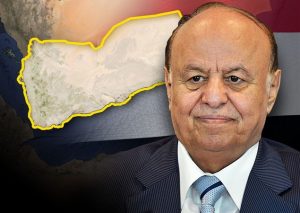
When President Saleh was forced to resign, Hadi became his successor. Hadi won the early presidential election, being the only candidate and having unlimited administrative control. However, he could not carry out urgent political reforms and hold power. He was viewed critically by most people in South and North of the country. During the Houthi offensive, Hadi fled south to Aden, and territories loyal to him surrendered one after another. Aden was the only source of resistance where the Southerners fought against the Houthis. Having stopped the Houthis in Aden, the Southern Movement, with the support of the UAE and Saudi Arabia, later occupied almost the entire territory of the former South Yemen, after which, the front froze. Poorly armed Yemenis from the north, were unable to defeat Yemenis in the south, but easily coped with Saudi and Emirati special forces, backed up by armored vehicles and aviation.
Hadi soldiers and their Saudi allies were unable to break the resistance of the Houthis outside southern Yemen. In turn, the supporters of President Hadi did not need Sana’a. They were more concerned with establishing control for Aden and what had to be done with the territory that was captured from the Houthis, where the Southern Movement was gaining strength.
Iran, Hezbollah and the countries of the “Shia Crescent”
The basis of the interaction between Iran, Hezbollah and the Houthis lies in the field of information and propaganda, as well as military-technical cooperation. The Houthis take the experience of Hezbollah in the field of mass media and use information resources of the Lebanese movement to promote their own interests. Iran assists in weapon supplies and provides technical specialists and military advisers from members of Hezbollah and the Islamic Revolutionary Guard Corps.
Today, a bloc of ideologically and socially similar movements, organizations and states is being formed on the territory stretching from the Levant to the Persian Gulf, meaning on the territory of Lebanon, Syria, Iraq and Iran.
It is likely that the members of this bloc seem to strive towards the following objectives:
- Maintaining the territorial integrity and sovereignty of their countries.
- The establishment of full-scale cooperation in the field of defense and security against the threats of Islamic extremism and the aggressive foreign policy of Israel and the US.
- Development of a common political outlook allowing for improvement of the quality of cooperation in various industries.
This block, in one way or another, includes modern Yemen. The current role of Yemen and the Ansar Allah movement is to restrain expansion and to limit the possibility of active foreign policy in the Middle East by the pro-Western monarchies of the Persian Gulf. The monarchies are forced to divert resources to operations in Yemen. This undermines their economy and morale of the armed forces.
Saudi Arabia
Relations between Yemen and Saudi Arabia remain extremely tense and have been so for a long period of time. The reasons for the confrontation lie in the history, culture and interplay of the various tribes and peoples of the Arabian Peninsula.
For example, in the first half of the 20th century, there were three districts of predominantly Zaidi-Shia and Ismaili population – Asir, Najran, Jizan – were occupied by Saudi troops. The hostilities in which Yemen was defeated ceased after the signing of the Taif Treaty (23 June 1934). Through it, Saudi Arabia obtained recognition by the Yemeni government of its control of Asir, Jizan and parts of Najran. The Houthis believe that the occupied provinces and the tribes that reside there must return to Yemen. The Ahrar al-Najran movement operates in the province of Najran. It stands for independence from the kingdom. The movement arose after Riyadh violated previous treaties between the kingdom and the tribes during the Saudi operations against the southern neighbor.
Shias living in the areas of Asir, Najran, Jizan, which now belong to Saudi Arabia, constitute a large part of the population, but do not have the same rights as the Sunni majority. This tense situation became worse when in March and November 2011 the Shias of Saudi Arabia held rallies, which were brutally dispersed by the authorities. In January 2016, the kingdom’s authorities executed a prominent Shia preacher Nimr al-Nimr and 46 of his supporters, causing a new escalation between Sunnis and Shias.
The observed pattern of behavior of the Saudi regime against Yemen is likely based on the risks associated with Shia rebellion for secession from Saudi Arabia. A similar scenario was considered by the New York Times in 2013 when they published a map of the kingdom, split into 5 states. This map was made on the basis of the geographical settlement of the tribes.
The scenario involves the creation of a new state: East Arabia, along the coast of the Hormuz Strait. The Hejaz region will belong to Western Arabia. The lands bordering Yemen were depicted under Southern Arabia. Part of the northern regions of the country were transferred to Northern Arabia, and the current Saudi Arabia was left with the central part of the country with the capital of Riyadh, which was to become the new capital of the Wahabistan.
This can explain why the country is fighting with the Houthis for so long and so stubbornly, ignoring the loss of people and resources. The kingdom is waging a war to keep its current existence. Another reason for the kingdom’s intervention in the Yemeni conflict lies in the logistical factor that has to do with oil. Yemen contains the oil port of Aden, which is the key to the transit of hydrocarbons in the Middle East.
The UAE
The battle against the supporters of Ansar Allah, AQAP and ISIS is the declared goal of the Arabian coalition in Yemen. However, the leading members of the Coalition (Saudi Arabia and the UAE) adhere to fundamentally different points of view. While expeditionary forces of Saudi Arabia remain uninvolved in anti-terrorist operations, UAE units with the support of unmanned US aviation, conducted a number of successful operations against Al-Qaeda in Handramaut (including the liberation of the administrative Centre of al-Mukalla) and in the area of Aden. In the view of the authorities from the Emirates, the main objective of the operation in Yemen should be to prevent the spread of terrorism in the Arabian Peninsula, not to fight Shia rebels.
The UAE has reacted quite harshly to Saudi Arabia’s desire to dominate both the region and the Gulf Cooperation Council. The Emiratis rightly believe that their country, having achieved considerable success in the sphere of economy and having gained sufficiently solid political capital, achieved a significant prestige in the world community, became the largest financial center in the Gulf, and no longer deserves to remain the secondary actor in the region.
While Riyadh supports President Hadi and is involved in action in Yemen, the UAE is gaining influence in the south of the country, where they are embodying their project to control the main ports of the Gulf of Aden and to attract the Southern Movement to their side. For example, UAE military bases in the Aden Gulf are already located on the island of Socotra (Yemen), in the port of Assab, including the airport (Eritrea), the port of Djibouti, including the airport, on the basis of Berbera (Somalia). Since June 16, 2016, the UAE ceased its fully-fledged participation in the Yemeni operation. Foreign Minister of the UAE Anwar Gargash announced that the military intervention in Yemen had achieved all of its goals, the war for the Emirate troops is almost over and they will remain in the country to monitor a political process and help Yemeni security structures in the captured areas. Another reason to leave the coalition was the appointment of General Ali Mohsen al-Ahmar, who was the commander of the loyalist Yemeni troops since February 2016, to the post of Vice President of Yemen. This was regarded as an insult in Abu Dhabi. This high-ranking military official is a member of the al-Isla party, a local branch of the Muslim Brotherhood. However, most importantly the leadership of the UAE left after seeing doubtful results and even more vague prospects of the operation. According to official data of the UAE, during the years of intervention, the country lost more than 120 people, not counting armament and military equipment. These are an unacceptable loss for the country. Therefore, since June 2016, the UAE troops are mainly engaged in ensuring the security of their bases in al-Mukalla and on the island of Socotra, while their participation in operations in northern Yemen is very limited.
In this regard, it can be predicted that the UAE will continue a limited participation in the conflict, while trying to control the Southern Movement, and, consequently, the infrastructure of ports in the southern part of the country.
Impact of the Yemeni conflict on the balance of power in the region
Currently, Yemen is a very complex node of conflicts. There is no single method to achieve peace within the country, in the region, and perhaps throughout the world. If the coalition continues its efforts with increased strength, it is likely that the Houthis will have to leave the capital and use the north-western part of the country as their main foothold. This will be accompanied by guerrilla warfare on the territory of the districts of Asir, Jizan and Najran, in which the Houthis will assist Ahrar al-Najran. In case of a military-political conflict in the region, the Houthis will be increasingly drawn into the orbit of Iran. Yemen will remain the front of regional conflicts, which would influence the global military-political agenda.
*
If you’re able, and if you like our content and approach, please support the project. Our work wouldn’t be possible without your help: PayPal: [email protected] or via: http://southfront.org/donate/ or via: https://www.patreon.com/southfront,
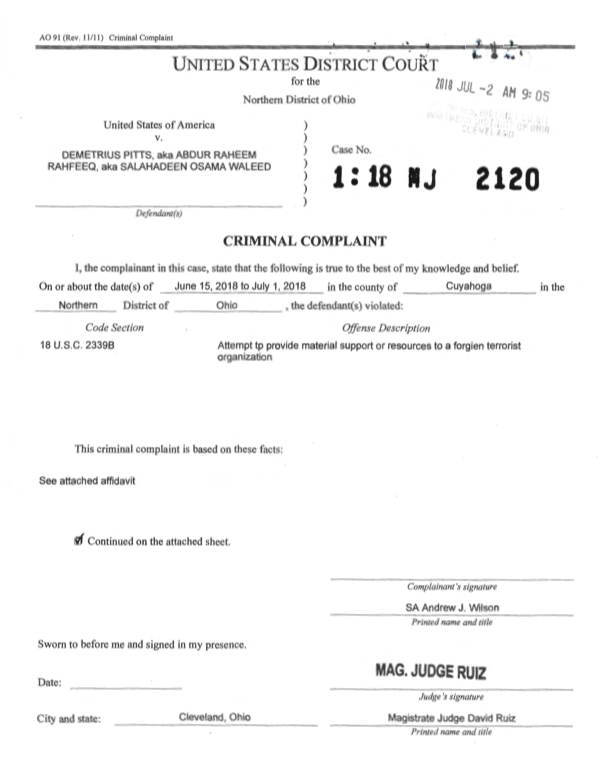

 Can you
Can you 